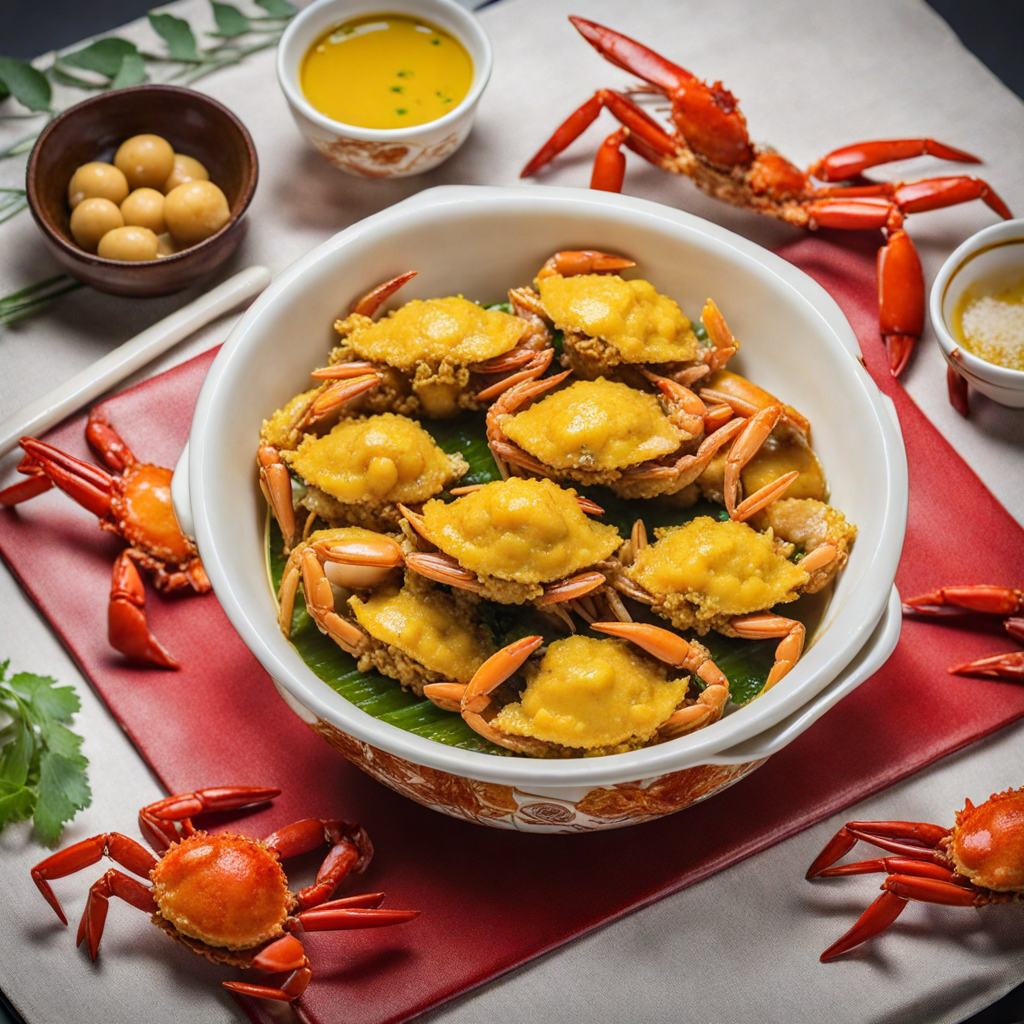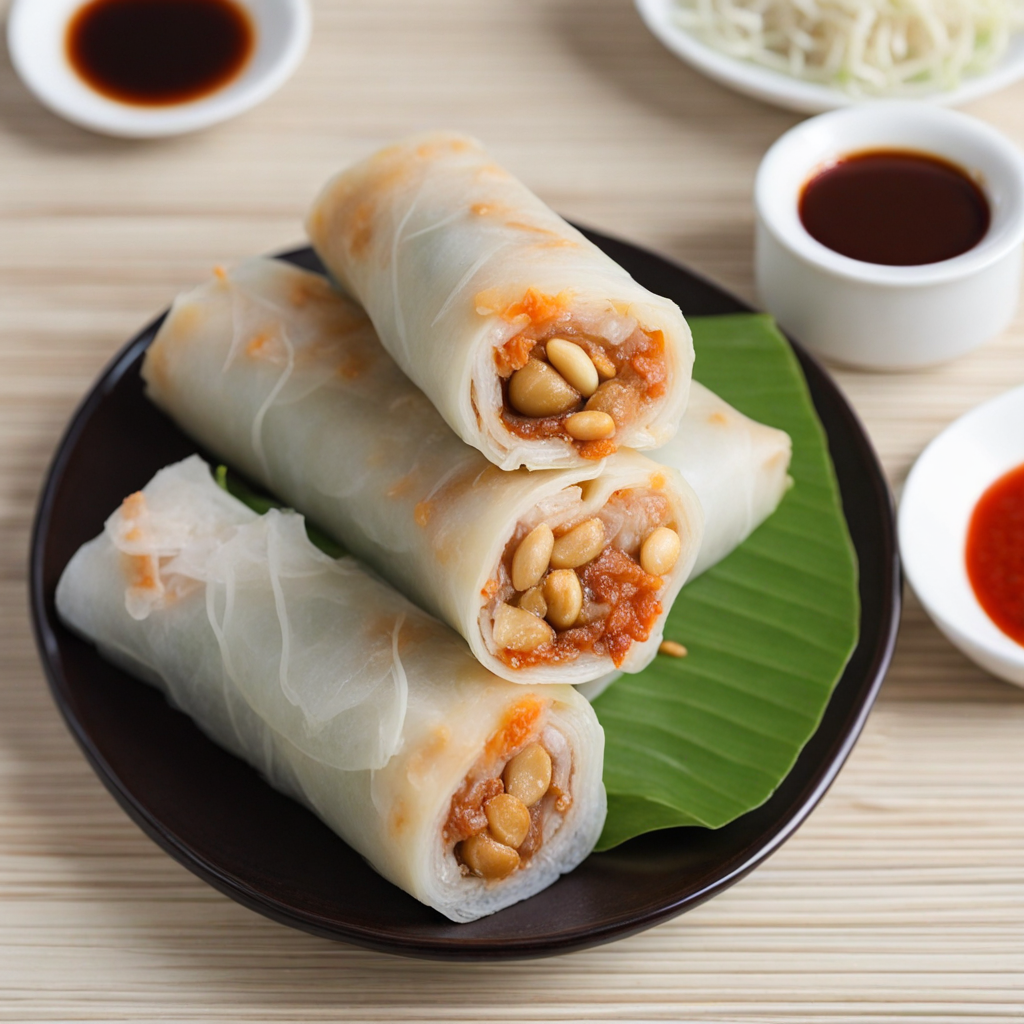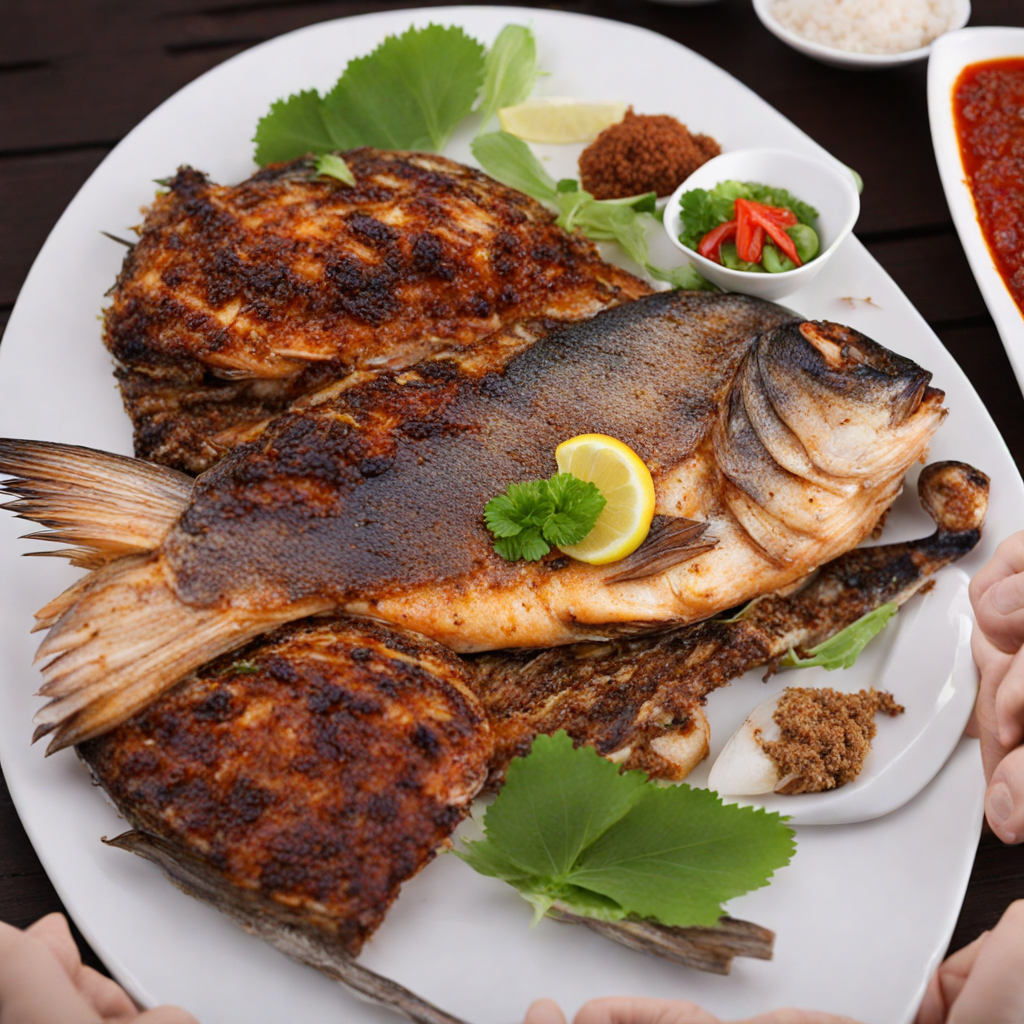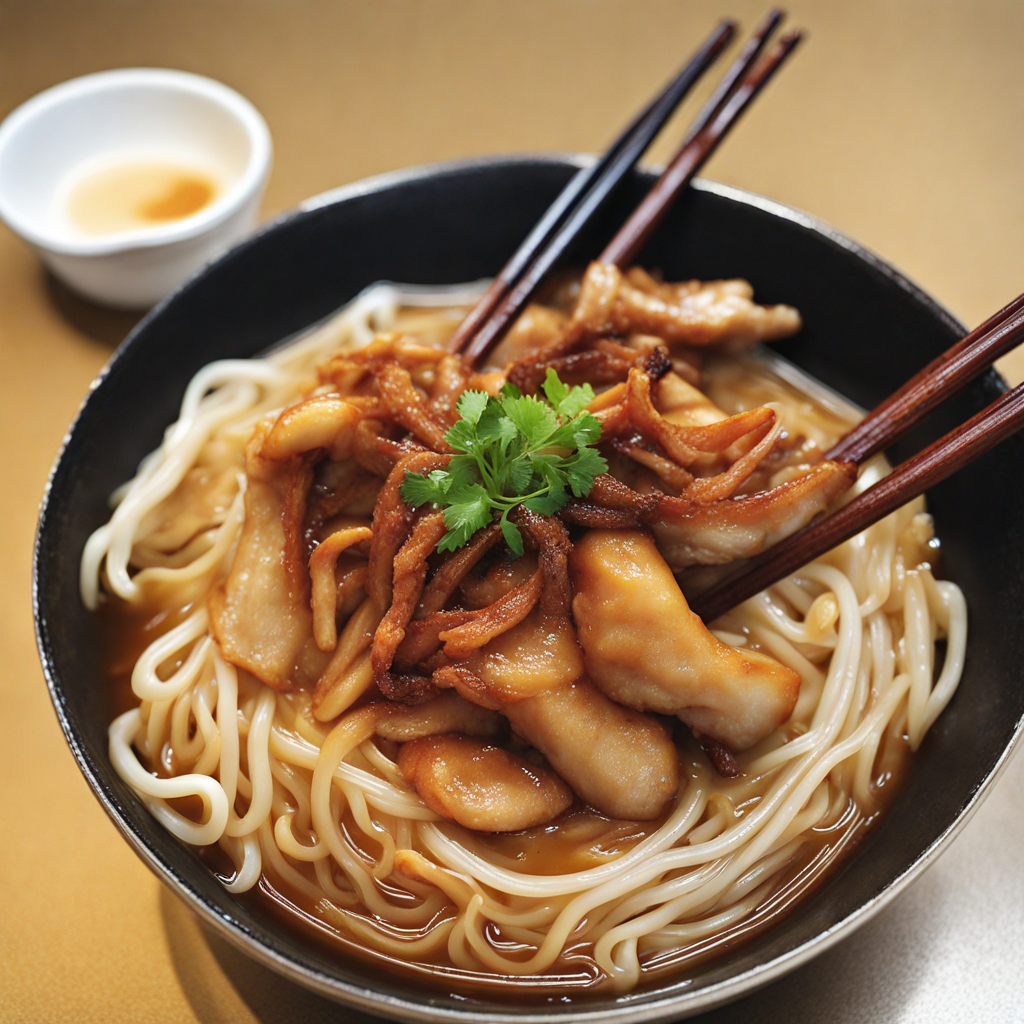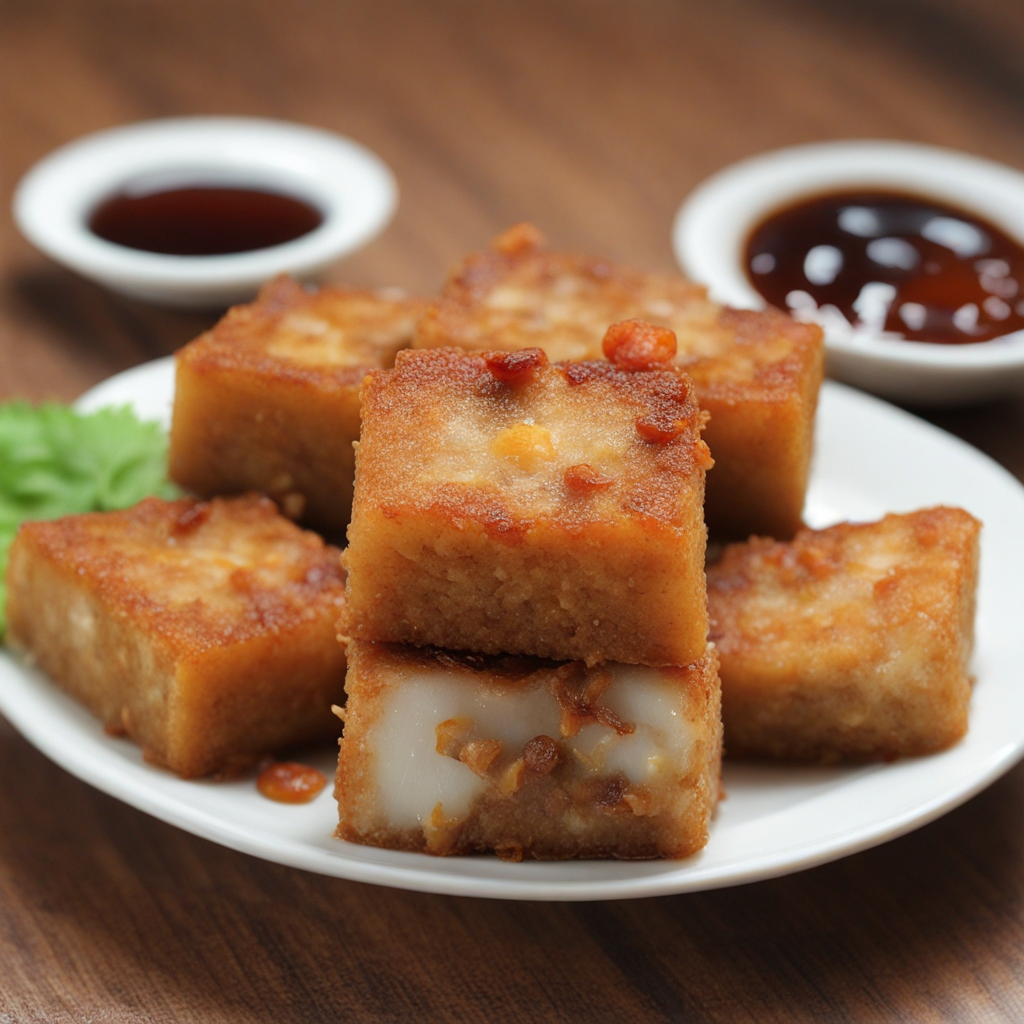Salted Egg Crab
Salted Egg Crab is a delectable Singaporean dish that showcases the unique flavor profile of salted eggs combined with the succulent sweetness of crab. The crabs, typically mud crabs, are first cleaned and cooked to perfection, creating a tender and juicy base for the sauce. The star of the dish is the rich, creamy salted egg sauce, which is made by blending salted egg yolks with ingredients like curry leaves, garlic, and chili, resulting in a velvety texture that clings beautifully to the crab meat. The balance of savory, creamy, and slightly sweet notes makes every bite an indulgent experience that highlights the freshness of the seafood. The dish is often served with mantou, or Chinese steamed buns, which are perfect for soaking up the luscious salted egg sauce. As you dig into the crab, you'll find the sweet meat juxtaposed against the salty, umami-rich sauce, creating a delightful explosion of flavors that dance on your palate. The addition of curry leaves infuses a subtle earthiness, while the garlic and chili provide a hint of warmth, making it an exciting dish that awakens your taste buds. Each claw and leg of the crab becomes a vessel for the sauce, ensuring that every morsel is a flavor-packed delight. Salted Egg Crab is not just a meal; it's a social experience, often enjoyed in a communal setting where diners can gather around a table and share the joy of cracking open crabs together. The experience of getting your hands messy and savoring the rich sauce adds to the fun and camaraderie of enjoying this dish. Whether you're a seafood lover or a food adventurer looking to explore new tastes, Salted Egg Crab offers a remarkable combination of flavors and textures that truly encapsulate the essence of Singaporean cuisine.
How It Became This Dish
The Engaging History of ‘咸蛋蟹’ (Salted Egg Crab) in Singapore #### Origins The culinary delight known as ‘咸蛋蟹’ (Salted Egg Crab) has become a quintessential dish in Singapore's vibrant food scene. This dish, featuring fresh crabs cooked in a rich, creamy salted egg sauce, is a testament to the country's culinary evolution and multicultural heritage. While the exact origins of Salted Egg Crab are somewhat nebulous, it is widely believed to have emerged in the late 20th century, rooted in both Chinese and Malay culinary traditions. Salted eggs, which are duck eggs preserved in salted water or a mixture of salt and clay, have been a staple in Chinese cuisine for centuries. This preservation method dates back to ancient times, initially used to prolong the shelf life of eggs. The salted egg itself is often associated with various traditional Chinese dishes, such as mooncakes and congee, but it was the fusion with crab that truly gave rise to the flavorful and decadent dish we know today. Crabs have long been a prized seafood in Southeast Asia, particularly along coastal regions like Singapore, where fresh seafood is abundant. The combination of crabs with salted egg yolk is thought to have originated from the creative culinary experimentation of local chefs who sought to elevate the natural sweetness of the crab meat. #### Cultural Significance Salted Egg Crab is more than just a meal; it represents the melting pot of cultures that defines Singapore. The dish embodies the harmonious blend of Chinese, Malay, and Indian influences that characterize the nation’s culinary landscape. In a multicultural society like Singapore, food serves as a unifying force, bringing together diverse communities and fostering a sense of belonging. The popularity of Salted Egg Crab can also be attributed to the rise of food culture in Singapore. With the advent of social media and food blogging in the early 2000s, the dish gained immense popularity, especially among younger generations. It became a staple in many restaurants and hawker stalls, ultimately leading to its recognition as a signature dish of Singaporean cuisine. Moreover, Salted Egg Crab is often associated with gatherings and celebrations, making it a popular choice for family dinners and special occasions. The act of sharing a plate of crabs, with their rich sauce and the hands-on experience of cracking shells, embodies the communal spirit of dining, which is an essential aspect of Singaporean culture. #### Development Over Time The evolution of Salted Egg Crab reflects broader trends in Singapore's food culture. From its humble beginnings, it has transformed into a gourmet experience, often found on the menus of high-end restaurants as well as local eateries. The dish has undergone various adaptations, with chefs experimenting with different cooking techniques and flavor combinations while maintaining the essence of the original recipe. In the 1990s, Salted Egg Crab began to gain traction in local seafood restaurants, particularly in places like the East Coast Seafood Centre, where patrons flocked to enjoy the fresh catch of the day. The dish was typically prepared using mud crabs, which are renowned for their sweet and succulent meat. Chefs began to showcase their skills by creating variations that included additional ingredients such as curry leaves, chili, and even cream, leading to the emergence of different styles of Salted Egg Crab. As the dish gained popularity, it also attracted the attention of international food critics and tourists. Food festivals and culinary events began to feature Salted Egg Crab, showcasing its status as a must-try dish for anyone visiting Singapore. The dish's vibrant appearance, with its bright yellow sauce and the glistening crab shells, made it a favorite subject for food photography, further enhancing its allure. In recent years, the trend of “salted egg everything” has emerged, with salted egg yolk being used in an array of dishes, from fries to pastries. This proliferation demonstrates the versatility of salted egg as an ingredient and has contributed to the dish's ongoing popularity. Chefs continue to innovate, incorporating local flavors and ingredients, thereby keeping the dish fresh and relevant in Singapore's ever-evolving food scene. #### Conclusion Salted Egg Crab, or ‘咸蛋蟹’, has undoubtedly carved out a significant place in Singapore's culinary history. Its origins reflect a rich tapestry of cultural influences, while its development over the years mirrors the changing dynamics of the city-state's food landscape. Today, Salted Egg Crab stands as a symbol of Singapore’s gastronomic identity, embodying the spirit of innovation and the celebration of multiculturalism that is at the heart of the nation. As Singapore continues to thrive as a culinary hub in Asia, Salted Egg Crab will likely remain a beloved dish, cherished by locals and visitors alike. Its creamy, savory sauce and the delightful experience of enjoying fresh crab have made it not only a meal but a cultural experience—one that invites people to gather, share stories, and savor the rich flavors of Singapore. The dish serves as a reminder of the importance of food in connecting people, preserving traditions, and celebrating the diverse tapestry that is Singaporean cuisine.
You may like
Discover local flavors from Singapore


